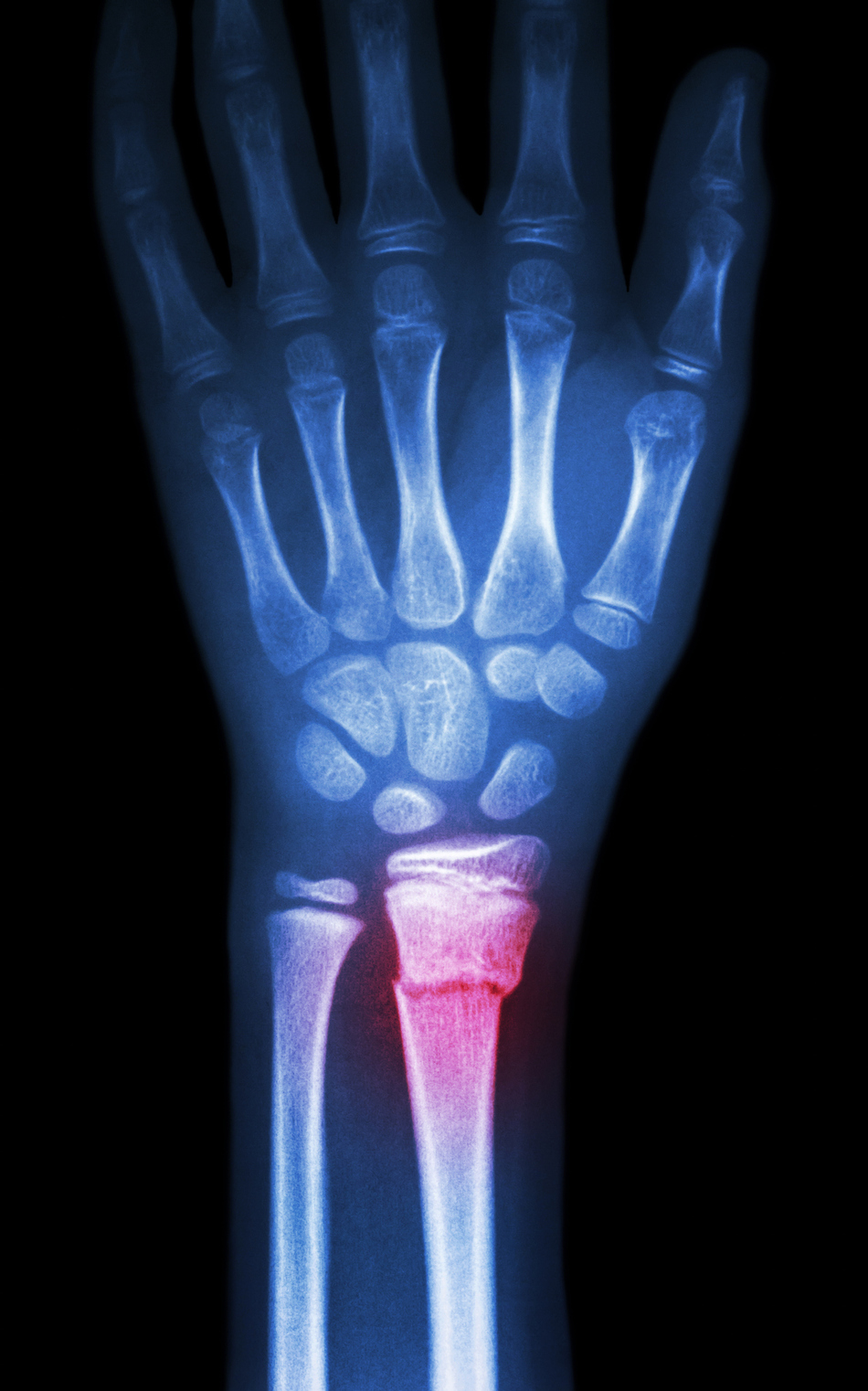
Episode Transcript
Dr. Miller: Can you have a fracture without seeing it on an X-ray? We're going to talk about that next on Scope Radio.
Announcer: Access to our experts with in-depth information about the biggest health issues facing you today. The Specialists with Dr. Tom Miller is on The Scope.
Dr. Miller: I'm Dr. Tom Miller, and I'm here with Dr. Joy English. She's a professor of orthopedics here at the University of Utah.
Joy, do you always see a fracture on an X-ray, or can you actually have a fracture without being able to see it on an X-ray? And if that's the case, what's that called? What is that?
Fractures and X-Rays
Dr. English: So that's actually a very common question, I guess. Very often, I would say most often, I get asked that question by parents. So one of the more common fractures that isn't seen on an X-ray is a growth plate fracture.
Dr. Miller: Who gets those?
b>
Dr. English: So growth plate fractures can occur in any child that has growth plates, which is where you grow from on the ends of the bone, and usually that's kids and adolescents ages up to about 15 to 17.
Dr. Miller: But what happens after 17 with that growth plate? Does it just fuse with the rest of the bone and you don't see it any longer? Is that right?
Dr. English: Yeah, that's about right. So as soon as the child is done growing, those two ends of the bone close together and they look exactly like the rest of the bone.
Growth Plate Fractures
Dr. Miller: So, are children more susceptible to growth plate fractures, these types of fractures than adults? I mean adults don't have growth plates per se, but are children then more predisposed to fractures, I guess would be the question.
Dr. English: I don't know that they're more predisposed to fractures, but there is this thought that the growth plate is a weaker part of the bone and so it is very common to actually get a fracture through the growth plate, especially when kids are growing.
Dr. Miller: So back to that question. I mean you could take an X-ray and perhaps not see a fracture that you would typically see in an adult, but you might make the assumption or the prediction that there is a fracture there. Is that correct?
Dr. English: Yeah, and part of the reason that it is very difficult for us to see fractures through the growth plate is because the way that the growth plate looks on in X-ray is the same as fractures look in an adult. And so when we look at the bone on X-ray, the bone looks bright white, but the area of the growth plate appears dark black, or darker than the rest of the bone. In adults, a fracture appears exactly the same way, so it's a dark area amidst a bright white bone. And in children, the growth plate, even though it looks that way, it may be normal.
Dr. Miller: So you have to make this diagnosis many times, I suppose, based on your clinical judgment.
Dr. English: Exactly. So even though we see a dark line amidst a bright white bone, I can say that's a normal appearing growth plate, but if your child is tender directly over that growth plate after an injury that can cause a break, then a lot of times we would diagnose you with what is called a Salter-Harris I, or a growth plate fracture.
Should My Child Get an X-Ray for a Fracture?
Dr. Miller: So I suppose for the parent who takes their child to see a physician, gets an X-ray, and is told that that X-ray is normal, but the child continues to have pain in an area where, you know, they fell or hurt themselves, maybe they should seek additional advice.
Dr. English: That's correct. I think that's very good advice. And often a lot of emergency medicine physicians or urgent care physicians are very good actually about placing your child into a splint or a cast, even if they don't see a fracture on an X-ray. And I would trust that that's the right thing to do, especially for a week or two, until they can follow up and have a repeat examination.
Dr. Miller: So if you make this clinical diagnosis of a fracture in a child, basically would you treat it the same for the same length of time?
Dr. English: Yeah, I would definitely treat it for a period of between four and six weeks, depending on where the growth plate fracture is located.
Dr. Miller: So, bottom line, if you have a child that's had an injury say to the wrist or to the leg and that area is painful and swollen, and even if the X-ray appears normal to a radiologist, you might want to have that checked out by another physician, especially a sports med physician or an orthopedist.
Announcer: Want The Scope delivered straight to your inbox? Enter your email address at thescoperadio.com and click "Sign me up" for updates of our latest episodes. The Scope Radio is a production of University of Utah Health Sciences.